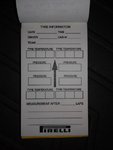Fabman
Dances with Racecars
- 6,553
- 8,204
- Exp. Type
- W2W Racing
- Exp. Level
- 20+ Years
Medical grade everything is super pure.Yes I was just thinking I might steal a cylinder from work and see how that does. I have about 6 big ones sitting at home in case we had Covid during the peak and hospitals were maxed out.















